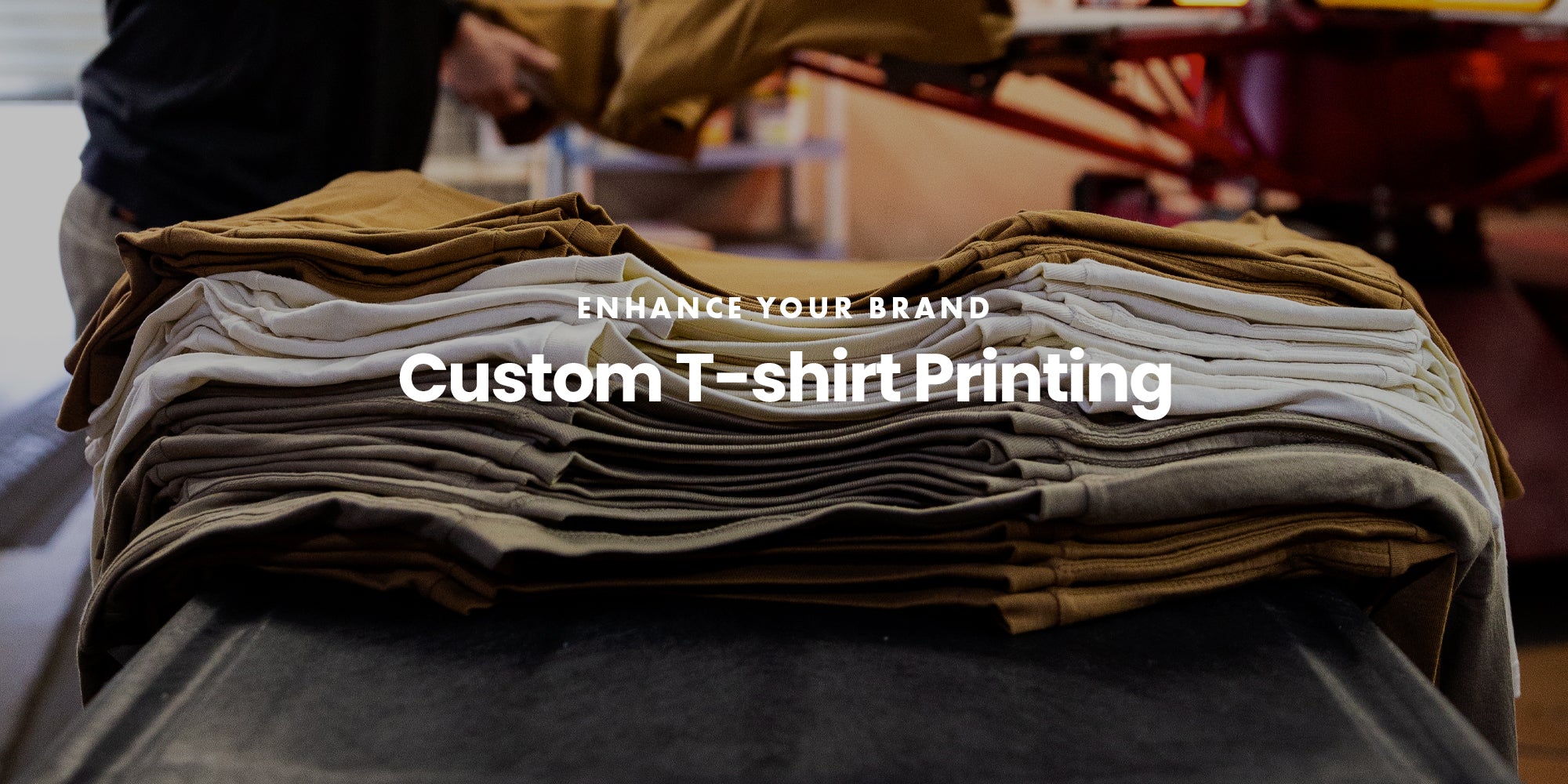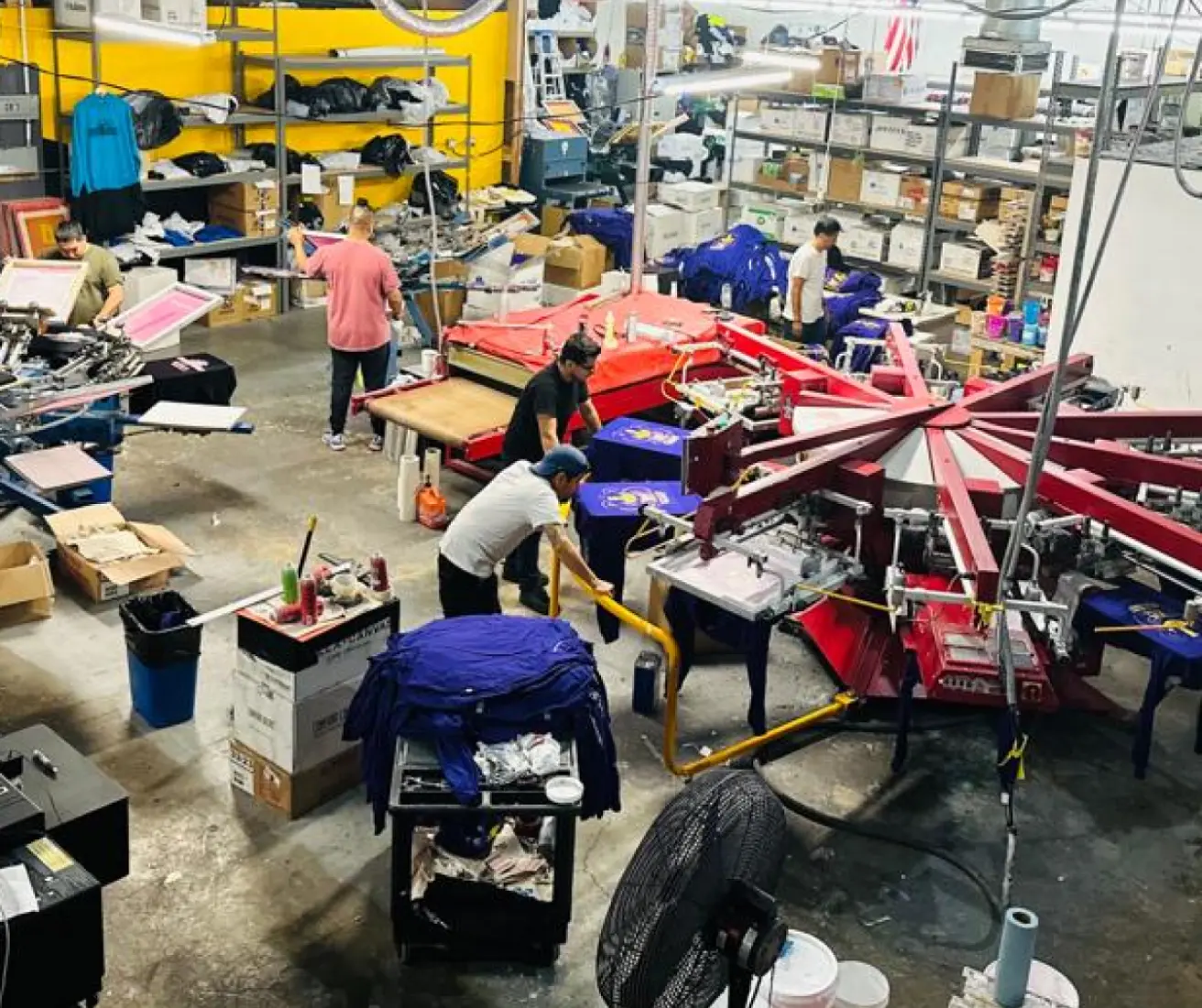Artistic Silk Screen Printing for Limited Edition Prints
Artistic Silk Screen Printing for Limited Edition Prints
Blog Article
Display Printing Uncovered: Everything You Need to Learn About Tee and Garment Printing Strategies
Display printing is an interesting technique that combines art with method, supplying limitless opportunities for creative thinking. All set to discover the essential aspects that make screen printing an art type?
The Fundamentals of Screen Printing: How It Functions
When you plunge into display printing, you'll find it's both an art and a science. At its core, screen printing entails developing a pattern, or display, that permits ink to pass via just in certain areas.
Next, you'll mix your inks and prepare your printing surface area. Placement the screen over the textile, then make use of a squeegee to push ink via the display onto the garment. This procedure requires accuracy, as you desire clear, dynamic prints. After printing, you'll heal the ink with heat, ensuring it complies with the textile and lasts via cleans. Each step is vital, and mastering them will boost your screen printing skills, changing basic garments right into one-of-a-kind, expressive items.
Kinds of Screen Printing Strategies
Once you realize the essentials of display printing, it's time to discover the various techniques that can raise your styles. One preferred technique is conventional display printing, where ink is pressed through a stenciled screen. This method is fantastic for vibrant, vivid shades. Then there's water-based ink printing, which supplies a softer feeling and is green, but it requires a various strategy to healing.
An additional alternative is plastisol printing, known for its durability and dazzling shades, making it a preferred for several brands. Experiment with halftone printing to produce gradient impacts and intricate styles.
Crucial Devices for Screen Printing
To attain magnificent lead to screen printing, having the best equipment is essential. You'll need a durable display printing framework, which holds the mesh that transfers your layout onto the garment. Next, purchase high-quality squeegees; these are necessary for applying ink uniformly across the display. You'll likewise call for an excellent direct exposure system to produce your displays, along with a washout booth for cleansing them after usage. A trusted heat resource, like a conveyor clothes dryer or heat press, is crucial for curing your prints to assure longevity. Do not fail to remember an appropriate work area, outfitted with tables and storage for your supplies. Safety equipment, such as gloves and masks, will certainly keep you safe from chemicals and inks. With the right devices, you'll be well on your means to producing professional-quality prints.
Picking the Right Inks and Products
When picking inks and products for display printing, you need to consider the type of ink that works ideal for your task. Think of textile compatibility to ensure your styles look last and excellent long. Additionally, explore green ink alternatives to make your printing procedure much more sustainable.
Kinds of Screen Inks
Selecting the appropriate screen ink is necessary for accomplishing vibrant, durable prints that meet your job's needs. There are numerous kinds of display inks to analyze. Plastisol ink is preferred for its convenience and simplicity of usage, offering excellent shade opacity on dark fabrics. Water-based ink, on the various other hand, provides a softer feel and is eco-friendly, making it ideal for those looking to minimize their environmental influence. Release inks remove color from the material, resulting in a soft, classic look yet require details handling. Specialized inks, such as metallic or glow-in-the-dark, can include one-of-a-kind effects to your layouts. Assess your task requirements and pick the ink that lines up ideal with your preferred end result.

Fabric Compatibility Considerations
Understanding textile compatibility is important for attaining high-grade screen prints, especially considering that different materials respond distinctively to numerous inks. Always examine your inks on example material to assure they stick appropriately and maintain color stability. Additionally, keep in mind that material weight and texture can impact the last outcome, so choosing the appropriate ink and material combination is important for your job's success.
Eco-Friendly Ink Options
Eco-friendly inks are coming to be a prominent selection for screen printers that want to lessen their environmental influence while keeping top quality. When picking inks, think about water-based inks, which are less damaging and less complicated to tidy up compared to traditional solvents. These inks bond well with fabrics, providing lively outcomes without toxic chemicals. You might likewise check out eco-solvent inks that utilize less volatile natural substances (VOCs), making them a safer choice for both your wellness and the planet.
Furthermore, search for inks made from sustainable sources, such as soy or vegetable-based choices. By selecting the appropriate inks and products, you'll not only create magnificent styles yet additionally add to a more lasting printing process. Make the garment printing switch, and your prints will mirror your commitment to the environment!
Preparing Your Design for Display Printing

Submit Layout Demands
To ensure your style looks vivid and sharp on fabric, you'll need to pay close attention to file style needs for screen printing. Make sure your layout has a transparent history to avoid unwanted white sides on your prints. Keep color modes in mind; CMYK is basic for display printing, so transform your RGB designs accordingly.
Color Separation Methods
Shade splitting up is an important step in preparing your layout for display printing, and mastering it can considerably enhance your print top quality. You'll need to damage your layout into individual shades, as each shade calls for a separate display throughout printing. This precision not just guarantees precise shade representation yet also streamlines the printing procedure.
Resolution and Size
Attaining the very best lead to screen printing begins with ensuring your style has the best resolution and size. Preferably, your art work needs to go to least 300 DPI (dots per inch) for sharp, clear prints. Your last product may look unprofessional and pixelated. if you utilize reduced resolution.
When it comes to dimension, consider the dimensions of your print area. Style your artwork to match the final print size, ideally developing it in the actual dimensions you'll be printing. In this manner, you'll stay clear of any kind of unanticipated scaling problems.
Constantly examine your style in both vector and raster formats. Vector graphics can be scaled without losing high quality, making them ideal for screen printing. Preparing properly will ensure your style looks remarkable on every garment!
Step-by-Step Screen Printing Refine
Screen printing is a vibrant procedure that enables you to produce dynamic designs on numerous surface areas. To get started, you'll need a display, solution, and your picked ink.
Pour ink onto the display and make use of a squeegee to push the ink with the stencil onto the textile. Raise the display meticulously and allow the print completely dry. You have actually successfully display printed your design.
Tips for Effective Screen Printing Projects
While you're diving into your display printing projects, bear in mind that prep work is crucial to success. Begin by gathering all your products-- inks, mops, displays, and garments. A tidy office helps stop undesirable errors, so clean up before you start.
Next, confirm your art work is high-resolution and effectively sized for your garment. Evaluate your display for appropriate exposure and tidy it extensively to prevent smudges. When blending your inks, follow the producer's guidelines to accomplish the appropriate uniformity.
During printing, use also stress with your squeegee for constant outcomes. Do not hurry; take your time to confirm each print satisfies your criteria. After printing, let your garments completely dry completely prior to handling or packaging them.
Last but not least, constantly maintain a sample of your job for future recommendation. In this manner, you can analyze your development and improve your strategies over time. Happy printing!

Regularly Asked Questions
How much time Does It Take to Set up a Display Printing Job?
Establishing up a display printing work commonly takes about half an hour to an hour. You'll prepare the screens, mix inks, and readjust the press. The time varies based upon intricacy and experience, so stay arranged!
Can I Publish on Different Textile Keys In Making Use Of the Same Technique?
Yes, you can print on various material kinds utilizing the very same technique, however you'll need to readjust your setups and inks. Some materials absorb ink in a different way, so trying out warranties the best outcomes for each and every product.
What Prevail Errors to Prevent in Screen Printing?
When display printing, prevent common mistakes like utilizing the incorrect ink, neglecting appropriate direct exposure times, or skipping pre-press checks. Constantly check your configuration and keep clean screens to assure high quality results each time.
Exactly How Can I Effectively Tidy and Preserve My Screen Printing Equipment?
To effectively tidy and preserve your screen printing equipment, you need to regularly wash screens with suitable solvents, inspect mops for wear, and guarantee all tools are stored dust-free and completely dry. Uniformity stops expensive repair services and improves efficiency.
Is Display Printing Eco-friendly Compared to Various Other Methods?
Display printing can be a lot more ecologically friendly than other approaches, particularly if you make use of eco-conscious materials and water-based inks. By selecting lasting supplies and practices, you lower waste and lessen your effect on the world.
Display Printing Uncovered: Everything You Required to Know About Tee Shirt and Garment Printing Methods
At its core, display printing includes producing a stencil, or display, that permits ink to pass via only in particular locations. Setting the display over the fabric, then utilize a squeegee to press ink with the display onto the garment. One prominent method is typical screen printing, where ink is pushed through a stenciled display.When selecting inks and materials for screen printing, you require to take into account the kind of ink that works best for your project.
Report this page